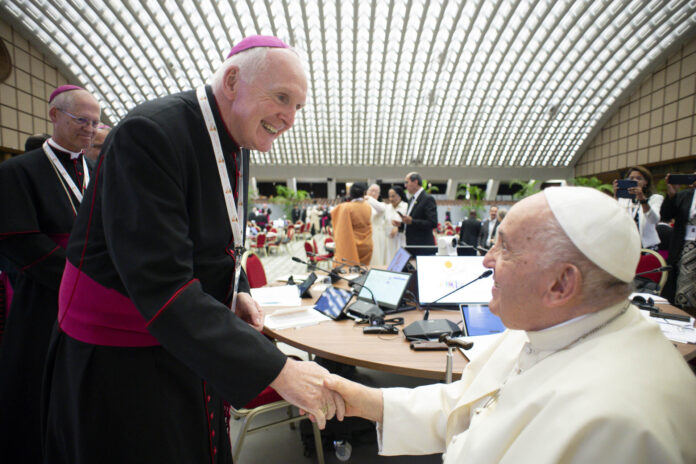
A REVIEW of the Catholic Diocese of Limerick has revealed that it is is in serious debt and almost half of its 88 priests are aged 75 or older.
The Limerick Dioscesan Overview also revealed that, in 15 years’ time, there will be just 13 priests under 75, compared to 47 today. Conversely, there is just one seminarian in the diocese today, with the current average age of clergy running at 72 years.
The study also uncovers stark financial challenges, with the wide breadth of essential services provided by the diocese incurring losses over income in excess of €1million each year.
The primary source of funding, offertory collections, are down by more than one third since 2010.
One area of strength revealed in the Diocesan Overview is its safeguarding programme, with 1,000 individuals vetted each year and 100 safeguarding representatives across the 16 pastoral units.
But there was a huge variation in weekend mass attendances, the largest of which was 882, with the smallest coming to just 42.
Publishing the Limerick Diocesan Overview, Bishop Brendan Leahy said that the report, which has been distributed to parishes across the diocese, confirms the huge volume of positive activity of the Church today across clergy, parishioners, staff, and volunteers but at the same time is set against the backdrop of dwindling resources.
Bishop Leahy said, however, that clergy and the faithful must look at the future as one of opportunity for a new Church to emerge at local level, one that has far greater lay involvement that will be a “true communion of people”.
The report states that there are some 2,500 volunteers currently helping out in various ways across the 60 parishes and 16 pastoral units.
Collectively, among other services, these provide for 436 masses weekly, 168 on weekends, as well as regular visitation of the sick and housebound, funerals and bereavement ministry, plus support of Limerick Social Services.
The financial shortfall is currently funded through investments but, Bishop Leahy says, this is not sustainable in the long term.
However, the review suggests a variety of new forms of financial supports for parishes will become available, including the Charitable Donation Scheme, standing orders, online donations, and QR code contributions to help address the shortfall.
Current income for priests is €30,000 per annum, with 26 of the 60 parishes in the diocese struggling to provide that. Priests serving in the 60 parishes receive a basic gross income from the four collections held in support of the clergy throughout the year but may receive additional offerings for the celebration of the sacraments and Mass intentions.
Where a priest does not receive the basic income, he is helped to reach it through support from his fellow clergy who have received more than the basic income in their parishes.
Bishop Leahy said that the Overview was a hugely important snapshot of the life of the Diocese and an invitation to the reader to consider their place within the family of this Diocese.
“Throughout the overview we provide some of the statistics of where things are at today,” he said.
“As well as highlighting the good news of how much life there is in the Diocese and parishes, in outlining the practical facts and figures of the Diocese this overview helps us plan for the future and names some of the challenges,
“We have to take a new direction, we have to work together to find that, and I’ve every confidence we will do that”.


